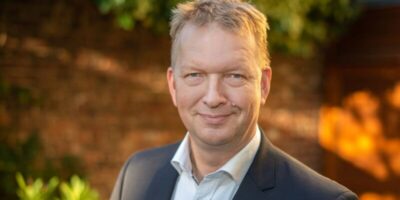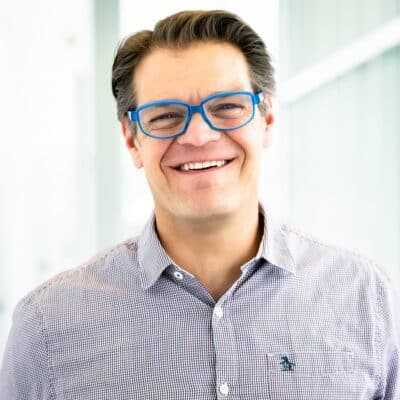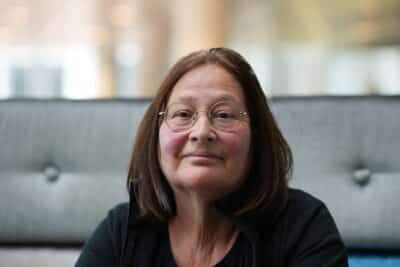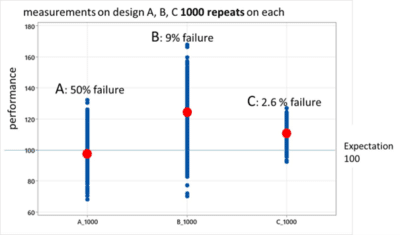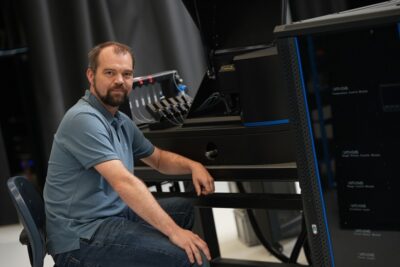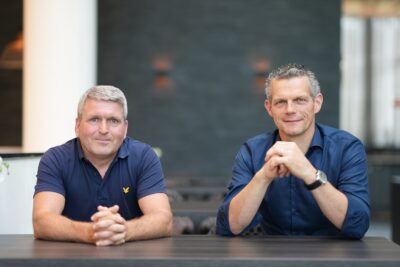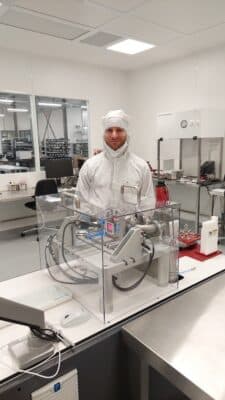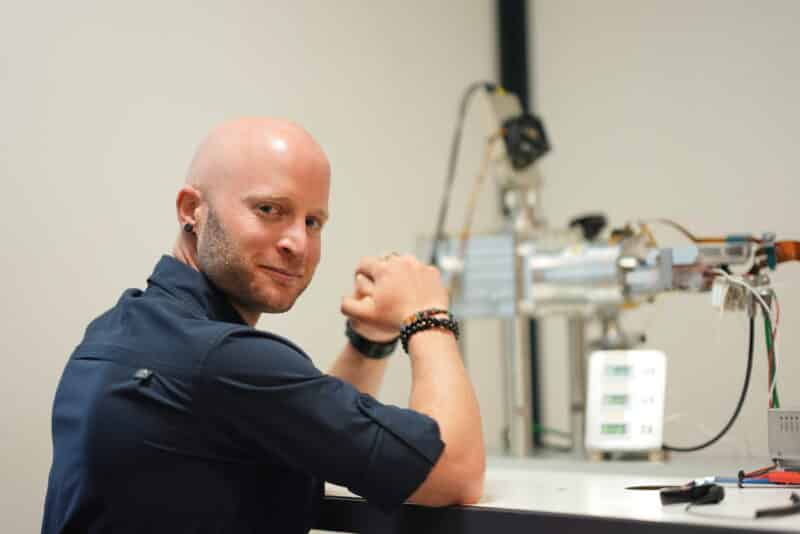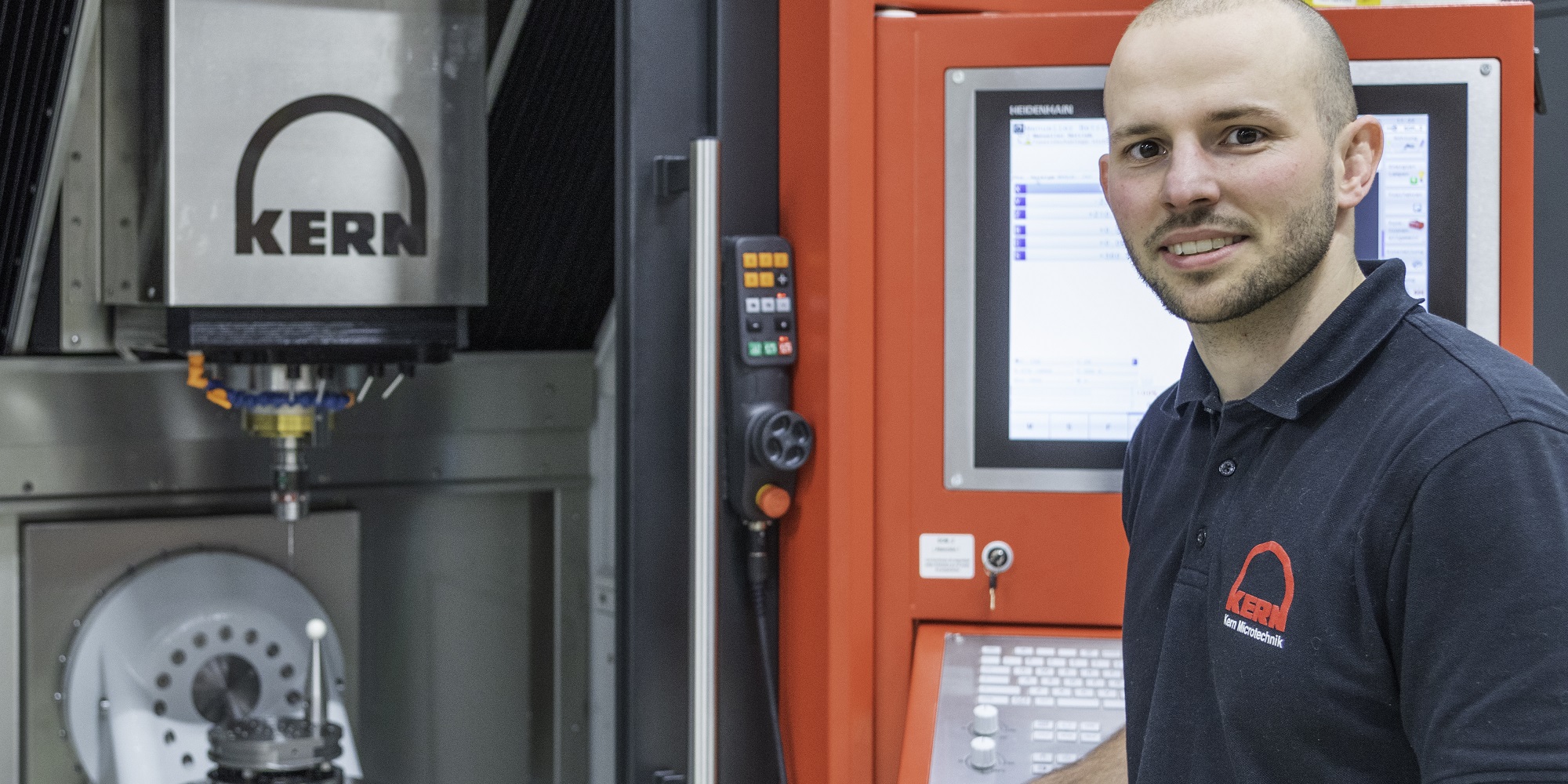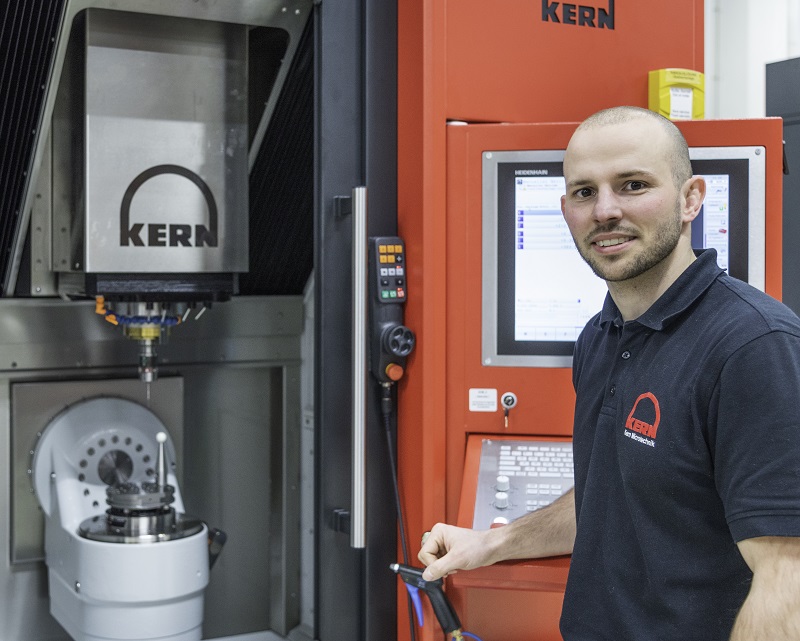Sebastian Pricking from the German company Trumpf knows what he’s talking about when it comes to lasers. Yet when he was promoted to lead the development of a new fibre-based laser, technical knowledge alone wasn’t enough. He had to step into the world of system architecting. That’s why he took the Systems architect(ing) course at High Tech Institute.
Trumpf is one of Germany’s hidden champions. Even though it’s not a household name, the Trumpf Group builds high-tech machines for clients all over the world, and employs more than 16.000 people doing so. Key to the group’s success is that since their founding in 1923 they have been family-owned.
“We work on innovations where we might have to wait five to ten years before we see a return-on-investment”, says Sebastian Pricking. “If your company is listed on the stock market, looking that far ahead isn’t always possible.”
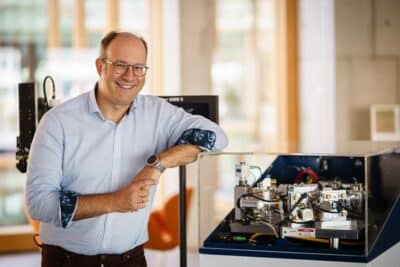
Photo credit : André Boden (Trumpf)
Pricking works in the laser development department at Trumpf. “We develop the concepts and do basic research”, he says. “We have other colleagues that specialise in the CAD designs and software. My team takes care of the system interfaces, the fundamental principles, and the basic concepts.”
They for example design the optical layout of a new laser. “We decide which kinds of mirrors to use, the coatings on the lenses, and so on, based on simulations and lab experiments”, says Pricking. “The actual mechanical integration is done by another team.”
''This course gave me the tools and the framework which allowed me to see the big picture, and make sure I hadn’t forgotten anything.''
Fibre laser
Pricking’s team works on solid-state lasers. These include YAG-based disks, but also fibre-based lasers, where the active medium is an optical fibre. Pricking currently heads a team that designs a new fibre-based laser.
The main applications of Trumpf’s lasers lie in industry, where they are generally used to treat metals. “Welding and cutting are some of the main applications of these lasers”, says Pricking. “One of the biggest industries we serve is automotive. Electromobility in particular is driving growth here. In the construction of batteries and electro-motors a lot of laser processes are needed. That market is growing significantly now.”
Lasers have been used for a while in those applications, but that doesn’t mean there isn’t more technological development to do. “Parameters like power and beam quality are still improving”, says Pricking. “We are also focusing on new features. We for example develop pulsed lasers. Here the light isn’t continuous, but comes in pulses with a higher peak power. That means that we need to time the pulses exactly right for the customer’s application.”
“We are definitely capable of offering suitable power levels for all the standard processes”, he says. “Solid-state lasers provide a broad range of power levels with an excellent wall-plug efficiency. One of our designs is a disk laser, which offers up to 24 kilowatt of infrared laser light.”
A disk laser has a thin active medium, which is placed on top of a heat sink. This solves issues around cooling. “In the past the active medium was often shaped like a rod”, says Pricking. “But that caused problems with the cooling, because it’s harder to apply a proper cooling to get the heat away. There are two possible solutions to this. Either you take the rod, and press it into a disk-shape, so the heat escapes more easily due to the increase surface. Or you take it and pull it, so that it becomes a fibre-based laser. We offer both of these designs to customers.”
''The entire experience was very entertaining. Me and the other students had dinner in the evenings, which allowed us to exchange experiences on how they do things in their companies.''
Architect
Pricking only recently took on the position of lead in the fibre-based laser team. Which is why he followed the Systems architect(ing) course at High Tech Institute.
“I’m originally an experimental physicist”, says Pricking. “I can do the lab work, I can simulate and calculate all the necessary effects. But when I took over the team, my work changed. I had to collect the requirements from the stakeholders. I had to make chains of tolerances. I had all these interfaces which I had to organise. I had to make sure everything fit together. I needed to be a system architect. The issue was not the technical aspects of the job, but how to organise the design. The training ‘Systems architect(ing)’ gave me the tools and the framework which allowed me to see the big picture, and make sure I hadn’t forgotten anything. The framework showed me where I was on the right track, and where something was missing. It allowed me to close the gaps.”
The course taught the student how to apply the CAFCR framework.
“It allowed me to orient myself”, says Pricking. “I assume there are other, competing, frameworks as well. But this one fits our way of working nicely. It confirmed we were on the right track.”
Besides the content, Pricking also liked the way the course was taught. “I liked the mixture between, on the one hand, the experimental and group work, where you for example present the group’s results to solve a given challenge. And on the other hand, theoretical presentations about the model and how it works. The course took a week, and it was filled quite nicely. The entire experience was very entertaining. Me and the other students had dinner in the evenings, which allowed us to exchange experiences on how they do things in their companies.”
During the course ‘System architect(ing), the teaching team was responsive to the questions from the students. “I for example asked about which software can be used to apply this framework”, says Pricking. “The teacher mentioned that it wasn’t part of the course, but he still offered me a list of software tools we could use, together with the advantages and disadvantages of each.”
The lessons he learned during the course he now applies to his job. “With this new background, I checked everything again”, says Pricking. “I applied the model to the project. I saw that there were a few gaps, which we closed rapidly. This course helped us improve our laser concept. Our next project will for sure use this framework from the start.”
This article is written by Tom Cassauwers, freelancer for High-Tech Systems.
Recommendation by former participants
By the end of the training participants are asked to fill out an evaluation form. To the question: 'Would you recommend this training to others?' they responded with a 8.5 out of 10.


